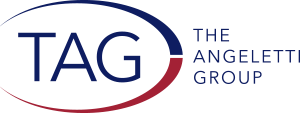Annual Funds are Changing in Education – Are You Ready?
It’s a fact – college tuitions at 4-year private institutions across this country have increased at a fierce pace! The average annual increase in college tuition from 1980-2014 grew by nearly 260% compared to an approximate 120% increase in all consumer items. Meanwhile, the number of individuals who actually pay full tuition has plummeted, with only 12% of private college families paying the full freight. As a result, the tried and true “tuition gap” argument that fundraisers have relied on for generations just isn’t effective any longer. Simply put, those with the capacity to make meaningful annual fund gifts are no longer convinced to give in support of the tuition gap, when they are among the select few paying full tuition.
As Jay Angeletti, Jose Gonzalez, and Geoff Handy shared at the CASE District II conference earlier this month, this phenomenon is evidenced by the widespread decrease in alumni participation rates. As evidenced by the graphic to the right, the number of top liberal arts colleges with greater than 40% of alumni/ae contributing has declined from 32 colleges (76.2%) in 1998 to 13 colleges (30.1%) in 2018. The numbers on the other end of the spectrum are equally disconcerting, as 15 colleges currently have 29% or lower alumni participation versus just one college at those levels in 1998.
Despite the evidence to the contrary, many institutions stick doggedly with traditional outreach methods and messages. The evolving profile of millennials who dominate the “young alumni” category shows vastly different social priorities and marketing influences than older alums; new studies indicate recent graduates engage with and give less to their alma maters and feel burdened by student loans. In addition, many universities and colleges, entranced by the rapid growth of huge donations, are increasing their focus on major gift programs while sacrificing resources previously allocated to annual funds.
Case Study: Innovation in Action
How can annual fund directors and their colleagues tackle this vexing convergence of economic, social, and institutional factors in both higher ed and independent K-12? In fact, there are many opportunities for astute and flexible fundraisers. Take Fordham Prep, an all-male Jesuit preparatory school in the Bronx. The Prep’s alumni participation in 2014 had fallen to 14% from the high teens, the “gap” message was worn and ineffective, and its traditional fundraising methods insufficient. Jose Gonzalez, Vice President of Engagement, Development, and Communications, clarified the school’s value proposition, starting with new messaging and personalized outreach. He “focused on the kids” to create a greater connection with alumni, encouraged constituents to speak with their peers, targeted marketing to smaller affinity groups, and engaged young alumni with social media and video. In three years, alumni giving jumped from 14% to 18% and the average gift size increased by 50%!
Multi-channel, Personalized Campaigns
Fordham Prep’s outstanding results reinforce the importance of annual funds as the foundation of educational development programs. Consider the actions below to help you overcome or neutralize the broader forces discussed earlier and, as with Fordham Prep, you may find refining your fundraising strategies – and messaging – can lead to even better results.
- (Re)define your messaging: First, ensure your institution’s value proposition is on point and your case statement reflects it. Assess whether your messaging fits today’s evolving environment. Consider how to tailor your message to your key constituent segments, e.g, what aspect resonates with a recent, socially-conscious grad versus a more traditional, older alum?
- Adapt your marketing channel strategy: Your strategy and positioning come first. From there, map out which media and channels fit each of your key audiences. Studies have repeatedly proven that multi-channel marketing drives the highest ROI in fundraising campaigns The trick is to match each market segment with the right digital, print, social, and increasingly, mobile option(s).
- Test your campaigns: The plethora of marketing options, combined with increasingly sophisticated database and analytics tools, make testing imperative! Be sure to test basics such direct mail versus email responsiveness and online versus offline giving. The next level is to understand how your various segments react to your campaigns and messaging, what engages them on social media, how, and when they want to hear from you.
- Perform basic market research: How well do you understand what’s important to your various constituents? What motivates them, where do you fit in their philanthropic priorities, how and when do they want to engage with you, how do they consume information? You don’t necessarily need costly, full-blown research projects about your reputation and brand. You can get started with email and online surveys for answers to these basic, core questions and gradually use your findings to adapt your annual fund strategies.
- Consider a lead nurturing program: Marketing automation tools help admissions offices create a personalized dialogue with applicants based on their interests and activity. Many of these platforms can also be deployed to support personalized alumni/ae communication based on the their habits in giving and attending events.
- Expand your and your team’s skills: The jobs of an annual fund office are much more complex than ever. It’s not just about phonathons and direct mail programs anymore; the name of the game is to understand how sociological changes affect perceptions of your institution; how to best match your diverse audiences with the dizzying array of direct mail, email, mobile, digital ads, and social media options; and how to leverage analytics while retaining the human touch.


